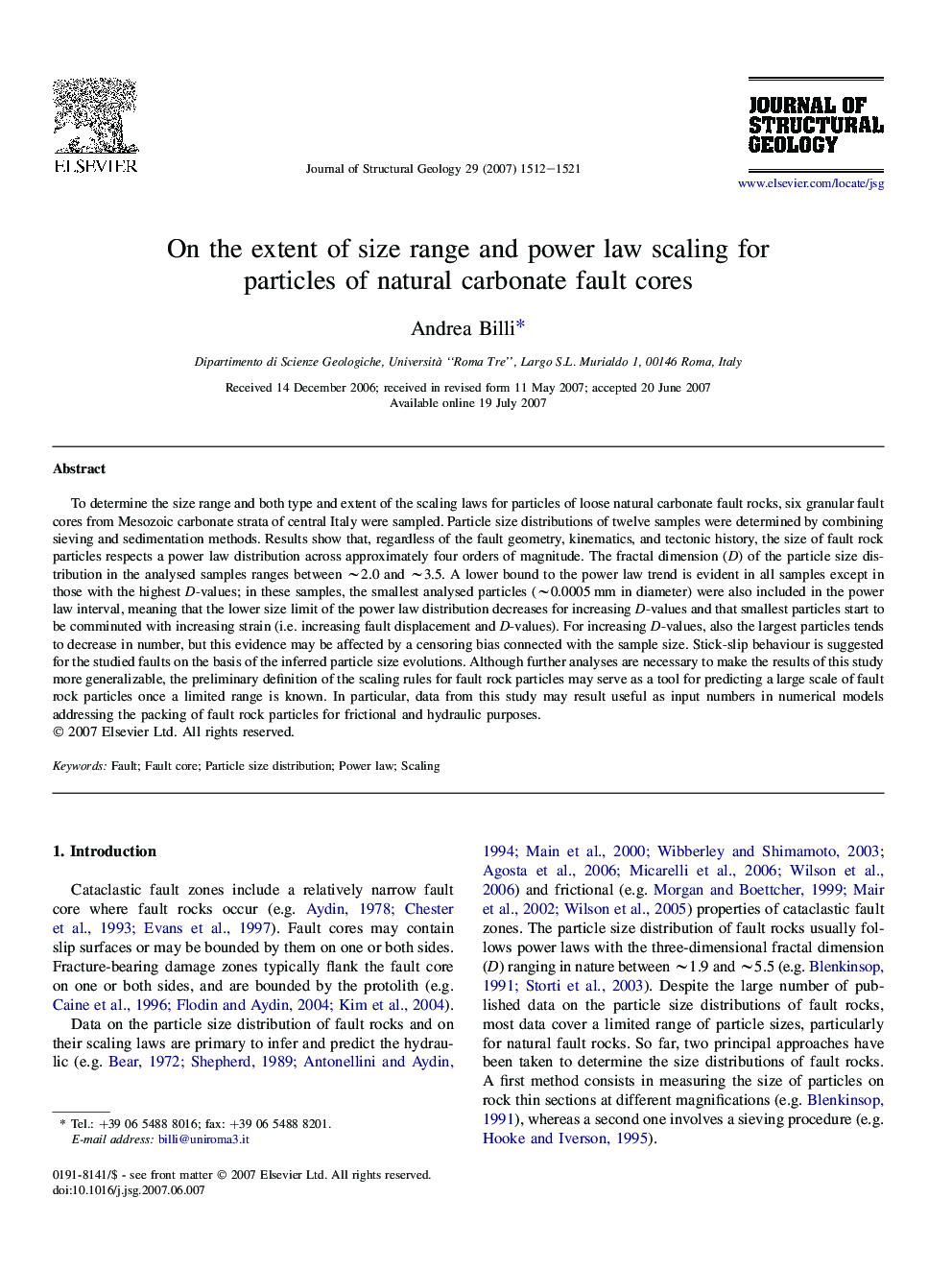| Article ID | Journal | Published Year | Pages | File Type |
|---|---|---|---|---|
| 4734035 | Journal of Structural Geology | 2007 | 10 Pages |
To determine the size range and both type and extent of the scaling laws for particles of loose natural carbonate fault rocks, six granular fault cores from Mesozoic carbonate strata of central Italy were sampled. Particle size distributions of twelve samples were determined by combining sieving and sedimentation methods. Results show that, regardless of the fault geometry, kinematics, and tectonic history, the size of fault rock particles respects a power law distribution across approximately four orders of magnitude. The fractal dimension (D) of the particle size distribution in the analysed samples ranges between ∼2.0 and ∼3.5. A lower bound to the power law trend is evident in all samples except in those with the highest D-values; in these samples, the smallest analysed particles (∼0.0005 mm in diameter) were also included in the power law interval, meaning that the lower size limit of the power law distribution decreases for increasing D-values and that smallest particles start to be comminuted with increasing strain (i.e. increasing fault displacement and D-values). For increasing D-values, also the largest particles tends to decrease in number, but this evidence may be affected by a censoring bias connected with the sample size. Stick-slip behaviour is suggested for the studied faults on the basis of the inferred particle size evolutions. Although further analyses are necessary to make the results of this study more generalizable, the preliminary definition of the scaling rules for fault rock particles may serve as a tool for predicting a large scale of fault rock particles once a limited range is known. In particular, data from this study may result useful as input numbers in numerical models addressing the packing of fault rock particles for frictional and hydraulic purposes.
